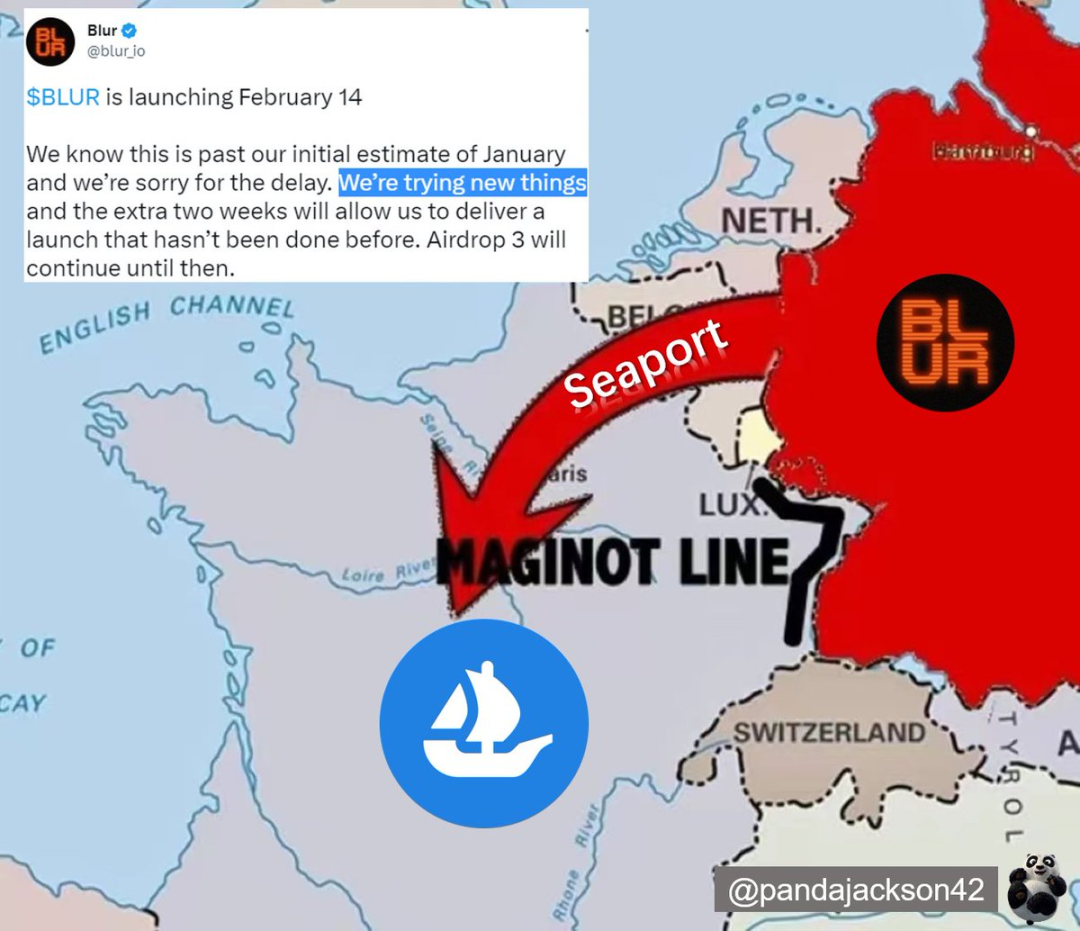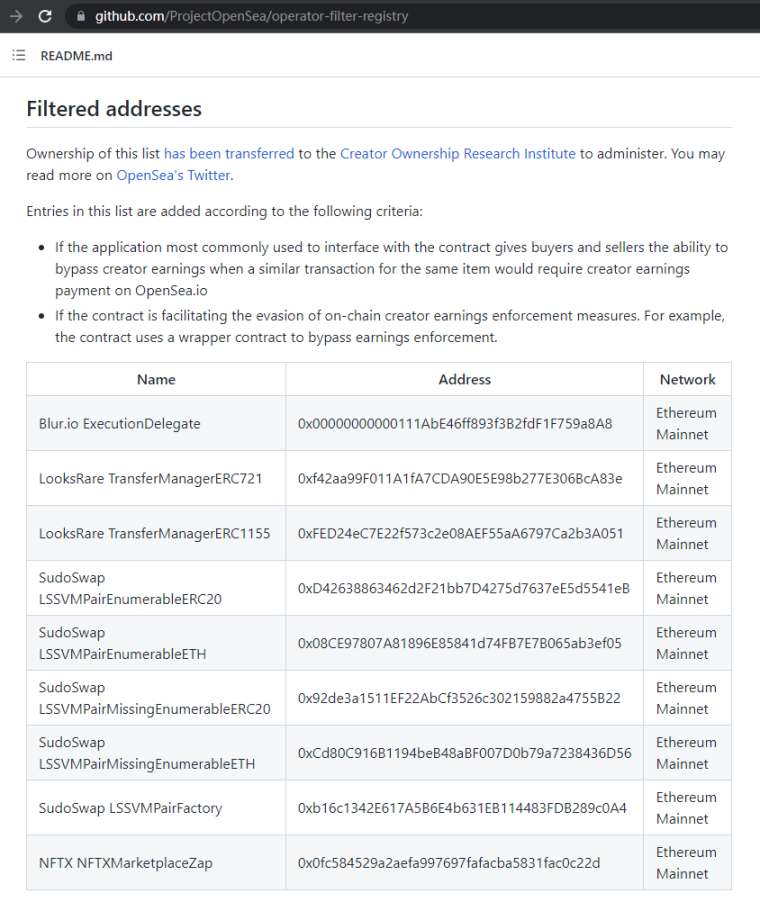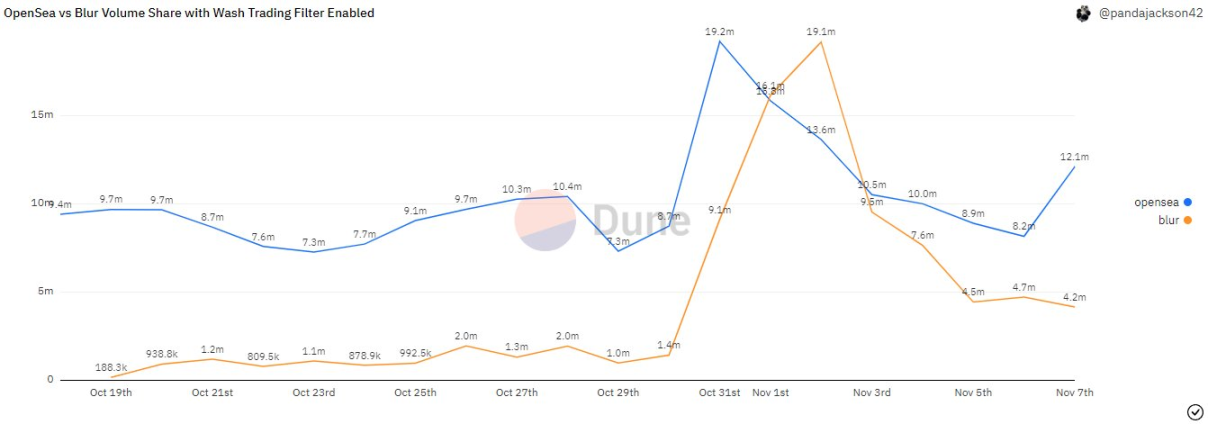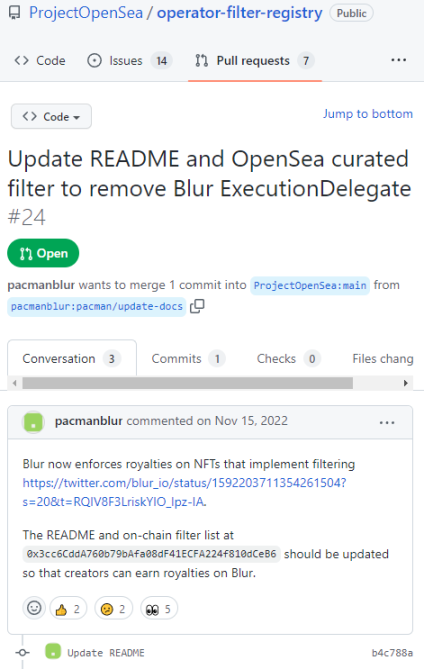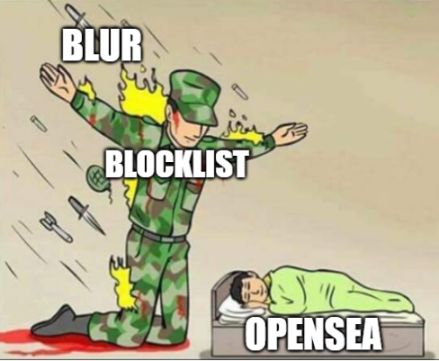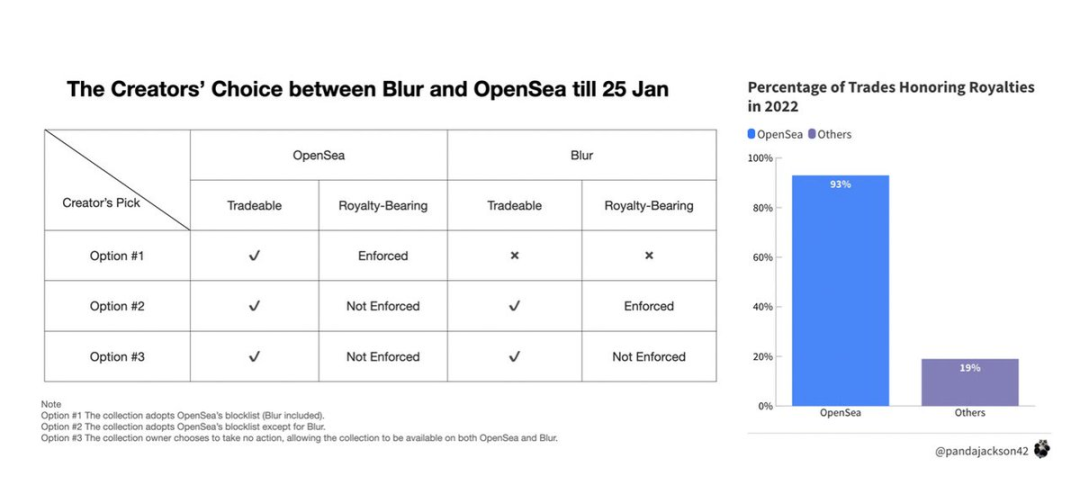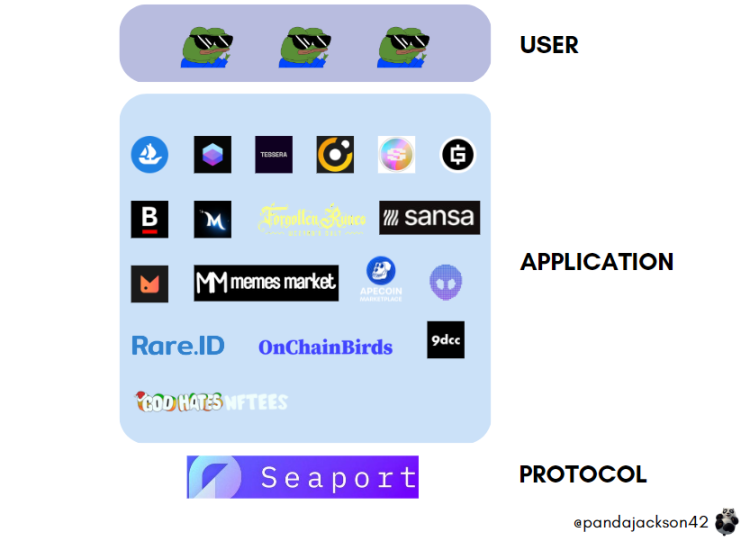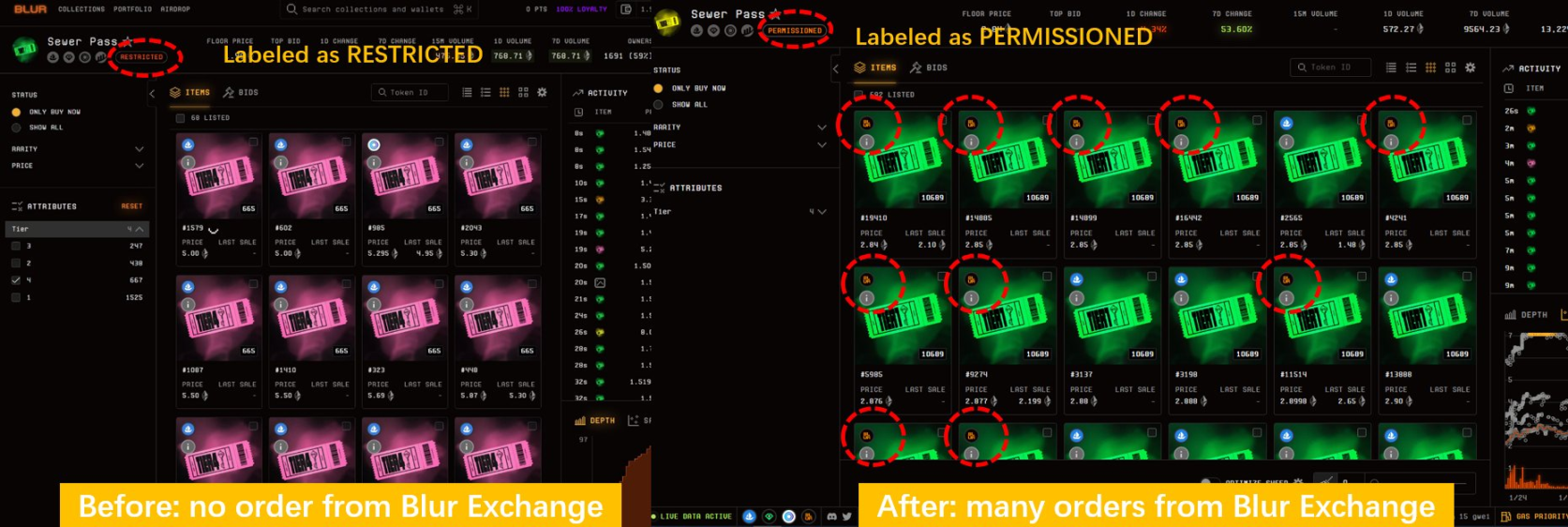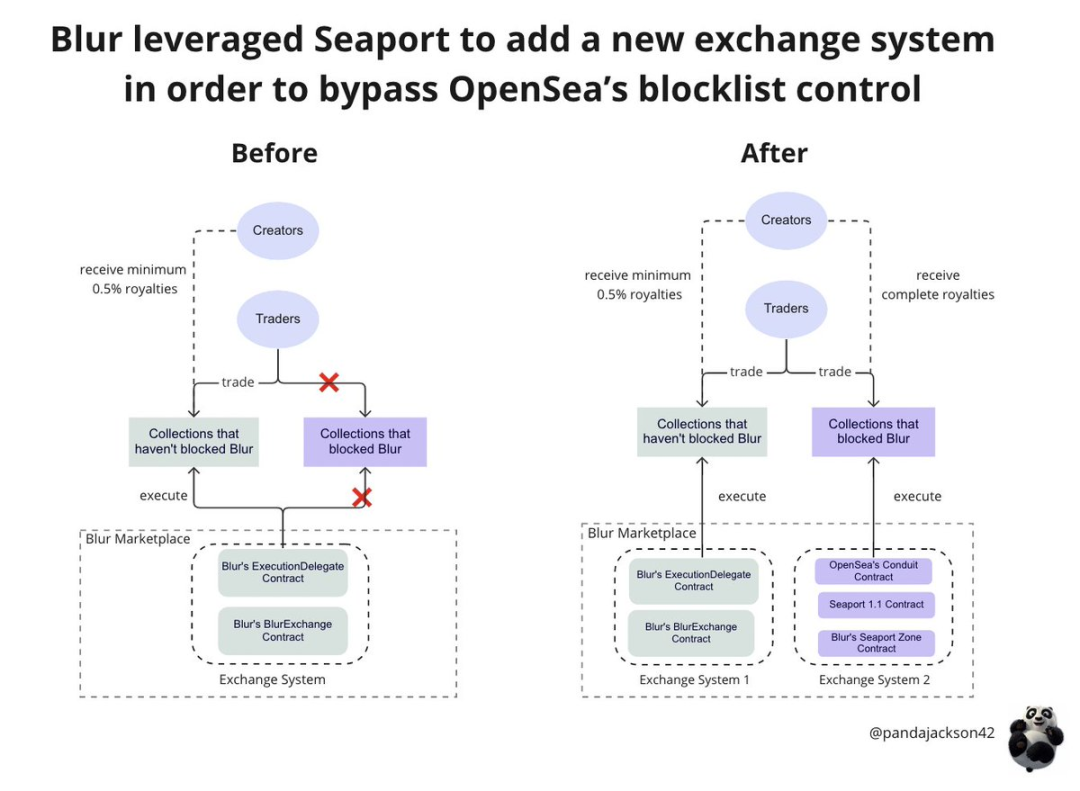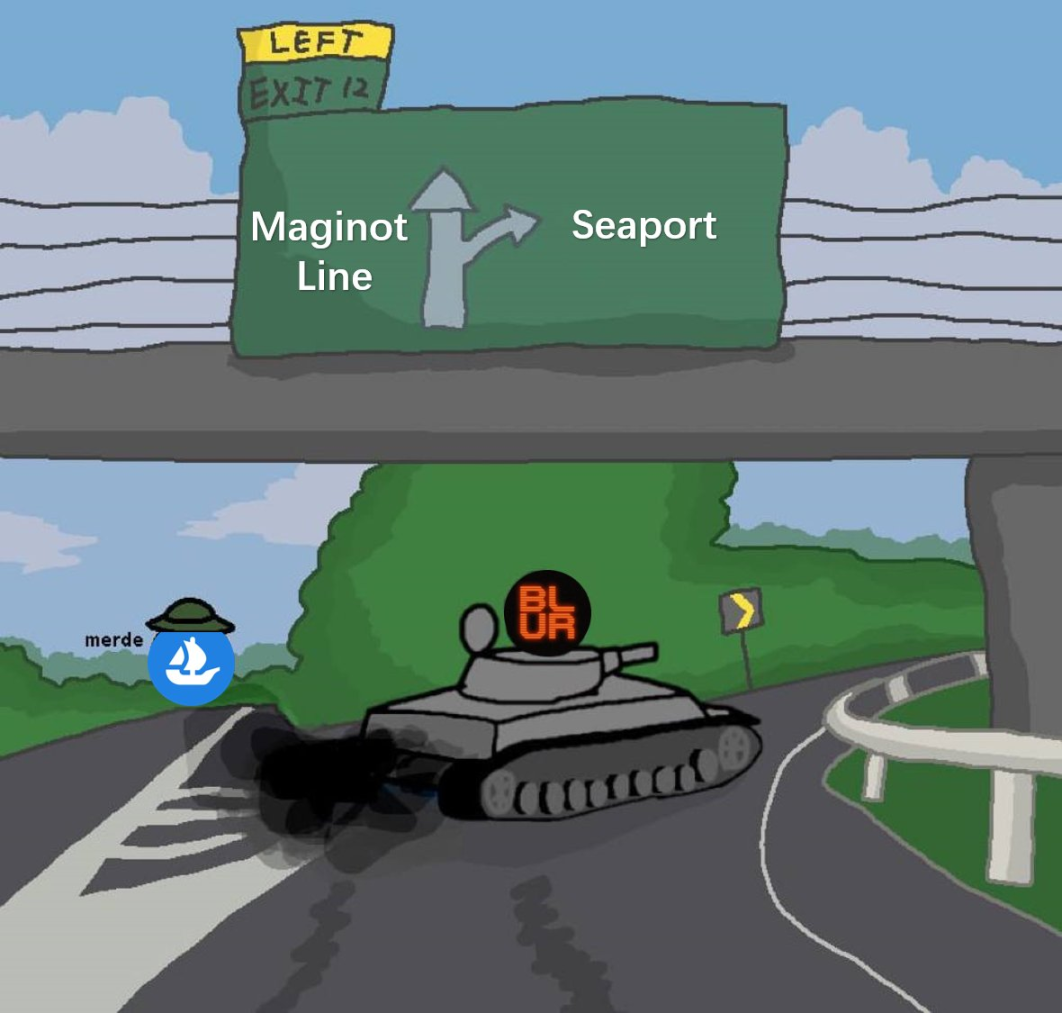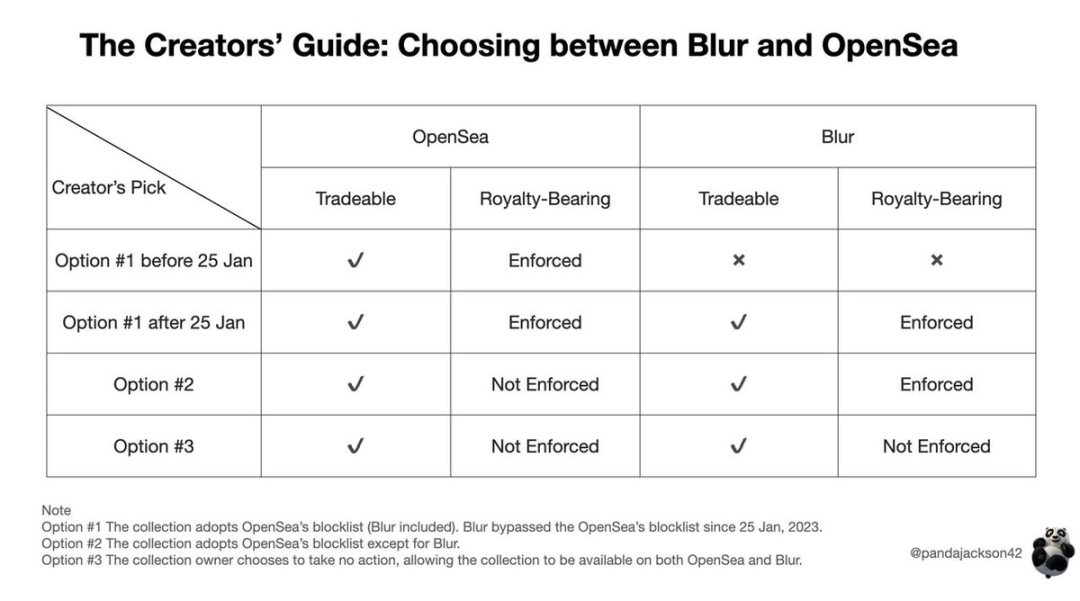Blur cleverly bypasses OpenSea's blacklist control, a review of its two rounds of confrontations
Author: Panda Jackson, Web3 Data Analyst
Compiled by: Overnight Porridge, The Way of DeFi
Blur has just made a game-changing move to bypass OpenSea's blacklist control.
As stated in the airdrop announcement, Blur is trying something new to achieve an unprecedented release.
Here’s what they did and how their actions will impact the NFT market, especially for creators and traders?
To make a long story short:
- OpenSea & Blur are currently the top 2 NFT markets;
- Three months ago, OpenSea enforced royalties by requiring new NFT collection projects to blacklist Blur;
- Blur attempted to remove itself from the blacklist but failed;
- Three days ago, Blur bypassed OpenSea's blacklist by using OpenSea's Seaport protocol;
- Now all NFT projects can be traded on Blur;
- All creators can now receive full royalties on both OpenSea and Blur.
In November 2022, OpenSea implemented a new policy: NFT projects seeking enforced royalties must blacklist markets that do not fully respect them.
Since Blur did not enforce royalties at that time, it was blacklisted, which resulted in NFT collections with enforced royalties on OpenSea not being able to trade on Blur.
After Blur launched in October 2022, its platform's trading volume began to rise, even surpassing OpenSea's daily trading volume for a period, threatening OpenSea's dominance.
OpenSea's new policy effectively established a defensive line to protect its leading position against emerging competitors like Blur.
In the short term, OpenSea's defensive line proved effective, as new NFT series like Yuga Labs' Sewer Pass chose to ally with OpenSea and blacklist Blur.
Blur's response was to promise to enforce royalties on new NFT projects. Subsequently, Blur co-founder Pacman made a request, claiming that Blur met OpenSea's standards and should be removed from the blacklist.
However, OpenSea replied that its policy requires enforced royalties for all NFT projects, not just new NFT projects that are blacklisted.
As a result, Blur was unable to break through this defensive line and remained on OpenSea's blacklist.
In this round of confrontation: OpenSea won.
Meanwhile, NFT creators found themselves caught in the crossfire between Blur and OpenSea.
- If they choose OpenSea, NFTs will not be eligible for trading on Blur;
- If they choose Blur, OpenSea will not enforce royalties.
In this situation, most creators chose OpenSea, as 92% of transactions on that platform enforced royalties, while only 19% did on others.
Before entering the second round of confrontation, let’s understand Seaport.
Seaport is a decentralized web3 market protocol developed by OpenSea, and it is open-source and permissionless, allowing anyone to use it for free.
Over 20 teams, including OpenSea, have already used Seaport to build NFT markets.
Blur discovered a loophole and created a new NFT trading system using OpenSea's Seaport.
Since Seaport is not on OpenSea's blacklist, this approach works. NFT projects that blacklisted Blur can now trade through the new system and enforce royalties.
Thus, Blur now has two systems to execute trades on its market.
The old system continues to handle NFT projects that have not blacklisted it, while the new system is responsible for NFT projects that previously blacklisted it. For users, the experience is very smooth, as Blur automatically selects the system.
So, can OpenSea stop Blur from bypassing the blacklist?
The answer is no.
Blur's method has left OpenSea puzzled; both Blur and OpenSea are built on Seaport, which means that if OpenSea wants to stop Blur, it would also be stopping itself.
OpenSea's blacklist is somewhat like France's Maginot Line: the Maginot Line was a series of fortifications built during World War II to protect France from potential attacks from the east.
However, despite the Maginot Line being solid and well-designed, it proved ineffective when the German army chose to invade Belgium to bypass it.
Similarly, OpenSea's blacklist seems like a powerful defensive measure, but Blur bypassed it using a new contract.
Round 2: Blur wins.
Blur cleverly bypassed OpenSea's blacklist control, having a profound impact on all parties involved, including Blur, creators, traders, and OpenSea.
For Blur:
- Blur bypassed OpenSea's Maginot Line and restarted trading for restricted NFT projects;
- Without any announcement, Blur has already captured 10% of the trading volume for all restricted NFT projects;
- We expect steady growth in the trading market as the new system is increasingly adopted and the upcoming $BLUR airdrop.
For creators:
Creators can now receive full royalties on both OpenSea and Blur.
- New NFT projects can achieve this by "blacklisting" Blur in their contracts;
- Existing NFT projects can achieve this by updating or changing to a new contract that "blacklists" Blur.
For traders:
- Traders can now trade all ERC721 NFT projects on the Blur platform, and since Blur does not charge platform fees, trading friction is lower;
- Note that restricted NFTs are currently only listed on the Blur frontend but cannot be bid on;
For OpenSea:
- As the initiator of the Seaport protocol and the largest stakeholder, OpenSea clearly benefits from more adoption of Seaport. The adoption of leading markets like Blur is a win for both Seaport and OpenSea.
- Although Blur bypassed the Maginot Line, OpenSea's efforts to protect creator royalties are commendable;
- Enforcing royalties will bring more income to creators, attracting more creators to join Web3, which will also benefit OpenSea.



